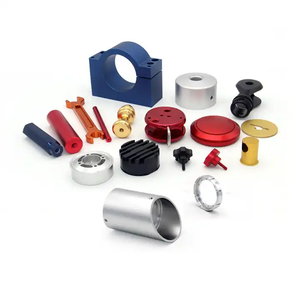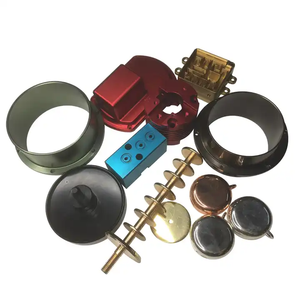
All categories
Featured selections
Trade Assurance
Buyer Central
Help Center
Get the app
Become a supplier

(2761 products available)





















































There are several go-kart parts that are important for the functioning of the go-kart, and some of them are as follows:
Chassis
Chassis is one of the key elements of go-kart parts. It serves as the foundation and is made from high-quality steel tubing, which provides the strength required to support other components. It also contains a flex that helps in the absorption of shocks, thereby ensuring a smooth ride. The chassis design can vary depending on the type of racing, with some being more rigid for faster straight-line speed and others having more flex for improved cornering stability.
Steering System
The steering system is another important aspect of racing go-kart parts, as it provides precise control over the vehicle. It comprises a steering wheel, axle, tie rods, and spindle. The wheels turn in response to the driver's input, allowing the go-kart to navigate around corners at high speeds. To ensure maximum accuracy and minimum deviation, the steering system must be exact and constructed with high-quality materials.
Braking System
The braking system on a go-kart is equally important and is made up of a hydraulic brake system that includes a brake pedal, calipers, rotors, and an axle. Go-karts travel at high speeds, so having a reliable braking system is crucial for safety and control. The braking system must be built to exact specifications, as even a slight reduction in performance can have serious consequences. To enable optimum performance and adjust for varying racing situations, go-kart brakes are frequently modified.
Bodywork
Bodywork is an important aspect of racing go-karts. It is made up of fairings, bumpers, and fenders, which are all necessary for aerodynamics and safety. Racing go-karts are built to exact specifications, and even a small deviation can lead to disqualification. Hence, these components must be constructed from lightweight fiberglass or plastic materials and designed to minimize air drag, which allows the go-kart to achieve maximum speed. In addition to its aerodynamic benefits, bodywork also serves a protective role by shielding the driver and kart from debris and impacts.
Some of the applications of racing go-kart parts include;
Recreational karting
In recreational karting, the chassis is the main component that provides structure and support to the go-kart. A well-built chassis ensures the go-kart is durable and can withstand the stresses of racing. The engine is equally important in that it provides the necessary power for speed and acceleration. Engines designed for recreational karting balance power and reliability, making them ideal for fun-driven races.
Competitive karting
Chassis are designed with precision to optimize performance on the track. They are made from high-quality materials like steel or aluminum to ensure strength and lightness. Engines in competitive karting are more powerful and are often subject to strict regulations to ensure fairness. Engine tuning is a common practice to maximize power output and improve overall performance. This includes optimizing the carburetor, exhaust, and internal components.
Indoor karting
Indoor karting primarily focuses on ease of maintenance and cost-effectiveness. Parts like tires and chassis are chosen for their durability and performance on indoor tracks. The chassis for indoor karting is designed to be lightweight and agile, allowing for quick maneuvers and accelerations. This improves the go-kart's overall responsiveness on indoor tracks, which often have tight corners and require frequent changes of direction. Tires are made from compounds that provide optimal grip on indoor surfaces, ensuring maximum traction and stability.
Outdoor karting
Outdoor karting emphasizes durability and performance in various weather conditions. Engines used in outdoor karting are built to withstand harsher conditions and provide consistent power across different terrains. These engines are often equipped with advanced cooling systems to prevent overheating and are built with materials that resist wear and tear from the environment. The chassis for outdoor karting are reinforced to handle rougher tracks and impacts from curbs and barriers. They are also designed to be adjustable, allowing drivers to fine-tune their go-karts to suit specific track conditions.
Selecting the right go-kart parts is crucial for building a fast, safe, and well-performing go-kart. The major factors to consider are listed below:
Chassis
The chassis type depends on the kind of racing. For instance, dirt racing requires a different chassis than asphalt racing. It is also important to consider the material. Steel chassis are more common for entry-level racing, while professional racing features chassis made of alloy steel or aluminum.
Engine
When choosing go-kart engines, consider the engine size, type, and power. Remember that engine size must comply with racing regulations. Two-stroke engines provide power at a lower weight, making them ideal for competitive racing. Four-stroke engines are more durable and fuel-efficient, making them ideal for endurance races. Engine power determines speed and acceleration. Balance is key when selecting an engine. A powerful engine must match the kart's weight for optimal performance.
Steering System
Select a go-kart steering wheel that offers precise control and comfort. Consider the radius of the steering axle and the type of steering column. A smaller steering wheel offers better control in high-speed racing.
Brakes
Brakes are crucial for safety. Choose go-kart brake systems with quality performance and reliability. Hydraulic brakes offer better stopping power and control than mechanical brakes. Make sure the brake components are durable and can withstand the demands of racing.
Safety Equipment
When selecting go-kart parts, safety comes first. Use high-quality safety gear, including a helmet, gloves, and racing suit. Make sure the go-kart has a proper seat with safety belts. For additional safety, consider adding a roll cage.
Suspension
Suspension parts are key to the go-kart's handling. A well-designed suspension system improves stability. Consider adjustable suspension parts to fine-tune the kart's handling to individual preferences and racing conditions.
By carefully considering these factors and conducting thorough research, racing enthusiasts can select the appropriate go-kart parts that will provide an exhilarating and competitive racing experience while ensuring safety and reliability.
Understanding the features, functions, and design of racing go-kart parts is essential for businesses that aim to cater to the needs of go-kart enthusiasts and racers. Below is a comprehensive overview.
Chassis
Feature: Made from tubular steel, offering strength and flexibility. Function: Serves as the backbone, providing structure and support.
Engine
Feature: Can be two-stroke or four-stroke, ranging from 100cc to 250cc. Function: Powers the go-kart, with two-stroke engines offering high power-to-weight ratios while four-stroke engines provide durability and consistent power.
Brakes
Feature: Typically disc brakes with hydraulic calipers. Function: Provides stopping power, crucial for safety and control at high speeds.
Steering System
Feature: Involves a steering wheel, axle, and tie rods, often with adjustable components. Function: Allows precise control and maneuverability, essential for racing.
Wheels and Tires
Feature: Rims are usually aluminum; tires vary in compound and tread based on track conditions. Function: Provides traction and stability. Slick tires are for dry conditions, while treaded tires are for wet conditions.
Seat
Feature: Made from fiberglass or plastic, often with padding for comfort. Function: Offers support and comfort, with positions affecting weight distribution and center of gravity.
Fuel System
Feature: Includes a fuel tank and carburetor; two-stroke engines use an oil-fuel mix. Function: Delivers fuel to the engine, with carburetors regulating the air-fuel mixture for performance.
Chassis
Design: Designed for strength with reinforced areas for stress. Different configurations (e.g., CIK, sprint) for specific racing styles.
Engine
Design: Compact with various engine mounts for different go-kart types. Cooling systems (air or water) for temperature management.
Brakes
Design: Disc placement on the rear axle for most go-karts. Adjustable brake pedals and systems for personalized brake feel and performance.
Steering System
Design: Adjustable tie rods and steering wheels for tailored steering response. Different gear ratios for varying levels of steering sensitivity.
Wheels and Tires
Design: Tire compounds range from soft for better grip to hard for longevity. Wheel design varies, with some featuring added camber for improved handling.
Seat
Design: Ergonomic design with side supports for high-speed cornering. Adjustable mounting for different driver heights and preferences.
What are the most common types of go-kart engines?
There are two common types of go-kart engines. They are 2-stroke and 4-stroke engines. The 2-stroke engines are lighter and more powerful, while the 4-stroke engines offer more torque and power at higher speeds.
How does a go-kart's engine affect its performance?
A go-kart's engine affects its performance by determining its speed, acceleration, and overall driving experience. More powerful engines provide better performance but may require more advanced driving skills.
What maintenance is required for racing go-kart engines?
Maintenance required for racing go-kart engines includes regular oil changes, air filter cleaning or replacement, spark plug replacement, and general engine inspection to ensure optimal performance.
What safety features should be considered for racing go-karts?
Safety features that should be considered for racing go-karts include a sturdy chassis, roll cage protection, seat belts, racing seats, and safety gear such as helmets, gloves, and protective clothing.
How does the type of fuel used affect the performance of a go-kart?
The type of fuel used affects the performance of a go-kart since high-octane racing fuels can provide better performance and efficiency compared to standard unleaded fuels. Using the recommended fuel type is important for optimal engine performance.